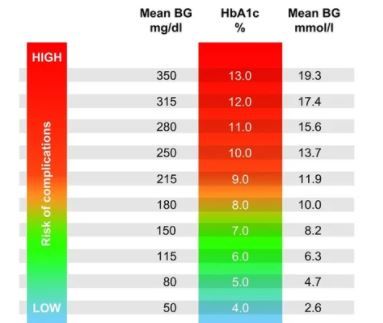Long-Term Use of Sulfonylureas Linked to Increased Risk of Hypoglycemia Unawareness
Hypoglycemia unawareness increased over time with use of sulfonylureas but decreased with use of insulin over the same period, a new study found.
Among adults with type 2 diabetes (T2D), treatment with a sulfonylurea for 5 years or more was significantly associated with a mean 3.5-fold greater increase in the odds of impaired awareness of hypoglycemia (IAH), according to a study from investigators in Taiwan.1
©Sophia Winters/stock.adobe.com

In contrast, co-first author Hsiang-Ju Cheng, MD, MS, from the department of family medicine at National Cheng Kung University in Taiwan and colleagues found that for study participants who were treated with insulin for less than a year the prevalence of IAH was higher than for those who used the medication for 5 years or more. They reported no difference in results using criteria from 2 standard IAH questionnaires. The study was published in the Annals of Internal Medicine.1
To evaluate IAH prevalence, Cheng and colleagues used questionnaires on IAH developed by investigators Clarke et al and Gold et al, both tools commonly deployed in similar research.2
Sulfonylureas. Their analysis found that overall prevalence of IAH among sulfonylurea users based on the Clarke tool was 65.3% (95% CI, 60.4%-70.2%) and 51.3% (95% CI, 46.2%- 56.4%) based on Gold. The corresponding IAH values for use of the medications for 1 year or less were 47.8% (95% CI, 27.4-68.2) and 30.4% (95% CI, 11.6-49.2), respectively. Compared with prevalence at 1 year, IAH prevalence for users of sulfonylureas at 5 or more years increased to 70.7% (95% CI, 64.8-76.6) (Clarke) and 56.9% (95% CI , 50.4-63.4) (Gold).
Insulin. For participant insulin users taking the medication for less than 1 year, the prevalence of IAH was 57.3% (95% CI, 47.7-66.9) according to the Gold measure and 30.1% (95% CI, 21.2-39.0) based on Clarke. Chen and colleagues reported a significantly lower prevalence of IAH for insulin use of more than 5 years, with a decrease to 41.0% (95% CI, 37.0%-45.0%) for the Gold questionnaire and to 28.2% (95% CI, 24.6%-31.8%) based on the Clarke questionnaire. The overall prevalence for individuals using insulin was 41.0 (95% CI, 37.0-45.0) and 28.2 (95% CI, 24.6-31.8), respectively.
Regardless of whether the medication taken was a sulfonylurea or insulin, the authors emphasize, regular clinic attendance for diabetes-specific medical care, such as blood glucose testing and retinal examinations, was associated with lower odds of IAH.
Regardless of whether the medication taken was a sulfonylurea or insulin, the authors emphasize, regular clinic attendance for diabetes-specific medical care, such as blood glucose testing and retinal examinations, was associated with lower odds of IAH.
IAH has been associated with serious medical outcomes, including mortality. Moreover, low awareness of severe low blood glucose is linked with high risk for dangerous adverse events such as motor vehicle accidents and falls, researchers added.
The rapidly growing prevalence of T2D, the increase in the proportion of this population using insulin plus oral antihyperglycemic medications, as well as the propensity for IAH in this group all underscore the need for increased attention to the issue in T2D. The research team also points to the dearth of information on IAH in T2D treated with sulfonylureas compared with the body of evidence for insulin therapy. The aim of their study, according to Chen and colleagues, was to compare the association and duration of use of the 2 medications with prevalence of IAH in adults with T2D.
From an initial group of 1095 potential candidates, the team enrolled 898 participants across pharmacies clinics and health bureaus in Taiwan City. IAH presence was determined using Chinese versions of the Gold and Clarke questionnaires. The final cohort had a mean age of 59.9 years and was approximately half each men and women. Approximately 80% had T2D for at least 5 years and mean duration was 14.0 years. Among them, 59.0% were insulin users, 34.9% were sulfonylurea users and 6.1% used both.
Independent risk factors. After multivariable adjustment (eg, for sociodemographic factors, disease history, medical care, and health status) the only factor that remained significantly associated with increased odds of IAH for people using sulfonylureas was use of the medication for 5 or more years (aOR, 3.56). On the other hand, both before and after adjustment for confounding variables, Chen et al found that use of insulin for more than 1 year was associated with lower odds of IAH, with the largest reduction seen with 5 or more years of use (aOR, 0.33).
In the fully adjusted model, compared with no use, 5 or more years of sulfonylurea use carried "sharply higher" odds of IAH (aOR, 3.06). Five or more years of insulin use vs no use, however, was associated with approximately half the odds of the complication (aOR, 0.52)
Long-term sulfonylurea use was associated with a higher risk of IAH among patients with type 2 diabetes, while longer duration of insulin use saw the risk of IAH decrease. The lower risks of IAH among both insulin and sulfonylurea users who received regular care suggests significant benefits of adherence with monitoring to include blood glucose assessment and screening for diabetes-associated complications, the authors wrote. “Further studies such as clinical trials proving a causal effect of physician adjustment of therapeutic strategies on hypoglycemia risk are needed to identify interventions for improving hypoglycemia awareness in this population,” they concluded.